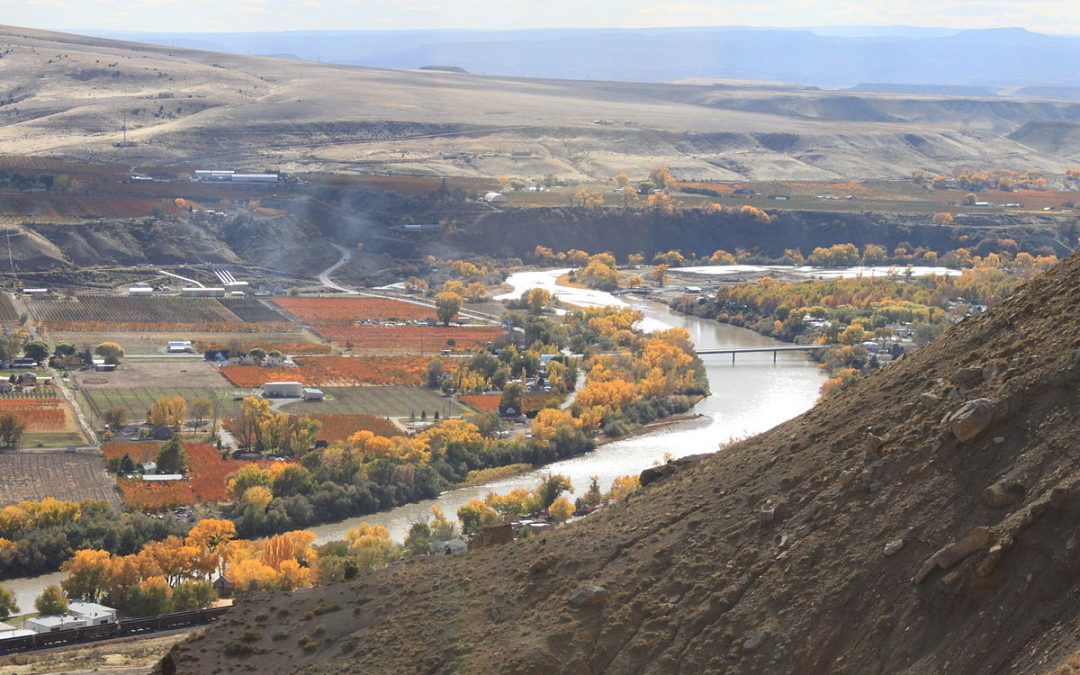Colorado’s Front Range and West Slope water users would share the pain in any water cutbacks needed to fill a new drought pool in Lake Powell, should the state move forward with an aggressive water conservation plan to cope with shortages on the drought-stressed Colorado River.
Under a policy approved by the Colorado Water Conservation Board Thursday afternoon, water users interested in participating in the conservation program would likely do so on a voluntary basis and would be paid to participate.
How the water savings would be achieved and paid for, how they would be integrated into the state’s existing system for allocating water, and whether such a program is even feasible will be determined in the coming year.
“This doesn’t mandate that we have a demand management program,” said Karen Kwon, an attorney with the Colorado Attorney General’s Federal and Interstate Water Unit. Demand management is the term the state uses to describe water conservation efforts. “It gives us time to investigate what makes sense to us. If we coalesce and can find a way to work together to control our own destiny, we will have a tool to do that.”
Thursday’s vote, which came before a standing-room-only audience in Golden, paves the way for Colorado to join Utah, Wyoming and New Mexico in signing off on a drought plan that covers the entire Upper Colorado River Basin.
Seven states comprise the basin. The Upper Basin includes Wyoming, Colorado, Utah, and New Mexico, while Arizona, Nevada and California make up the Lower Basin. All seven receive their water from the river under the terms established in the 1922 Colorado River Compact and subsequent legal rulings.

Colorado River Basin: Credit: Chas Chamberlin
In October, the Upper and Lower Basins agreed to coordinate their regional drought protection plans, an historic event on the river. But that deal depended on each state – and its water users – approving those plans as well.
Whether Front Range and West Slope water interests would sign off on the new CWCB drought policy was in doubt up until the vote.
In September several powerful Front Range water districts suggested that the state should at least consider a mandatory plan to achieve enough water savings, in case a voluntary program failed.
But that angered West Slope water users, who have long feared that they would be forced to give up their water to protect Colorado’s urban areas should a crisis on the Colorado River erupt.
“It wasn’t always clear this was going to happen,” said Russell George, referring to Thursday’s vote. The CWCB’s action followed weeks of heated negotiations between water users and the state. “But we all stayed on it and wrestled the pieces to the ground, one at a time. We’ve done something really important for the state today.”
George is a member of the Colorado Water Conservation Board, representing the mainstem Colorado River Basin within the state of Colorado, and former speaker of the Colorado House of Representatives.
Front Range and West Slope water users agreed to support the policy Thursday, acknowledging that months of painful technical and legal work lies ahead to see if they can come up with an acceptable way to set aside Colorado’s portion of the 500,000 acre-feet of water needed to fill the Upper Basin’s Lake Powell drought pool.
“We think this policy is an appropriate and balanced way to address competing interests,” said Bennett Raley, an attorney representing the Front Range Water Council. The Council includes Denver, Aurora, Pueblo and Colorado Springs, as well as the Northern Colorado Water Conservancy District, which serves numerous cities including Longmont and Broomfield.
Kathleen Curry, a former state lawmaker and chair of the Gunnison Basin Roundtable, said the policy addressed most of the West Slope’s concerns.
“The draft policy in large part included the criteria we were concerned about. I appreciate that,” said Curry, who had been a vocal critic of the CWCB and its work on the drought plan.
Thursday’s vote comes after a devastating drought year in which Colorado and other states saw some of the lowest snowpacks and streamflows on record. Flows into Lake Powell were roughly one-third of average and Powell and Mead are now less than half full on a combined basis.
Since 2007, the Colorado River Basin has been operating under a set of interim guidelines designed to protect Powell and Mead from dropping too low.
But those guidelines were based on much higher projected river flows than have materialized since then.
As levels in Powell and Mead have dropped, alarm among water officials has been rising.
Colorado and other Upper Basin states are legally required to deliver 8.23 million acre-feet of water to Lake Powell in an average year. Because this year was so dry, even more was needed, and under those interim guidelines the Upper Basin states had to release 9 maf from their dwindling supplies in Powell.
Lower Basin states have watched supplies in Lake Mead dwindle as well. Under the Lower Basin drought plan, these states would have to take additional steps to use less water and leave more in Lake Mead. All told, they hope to store an additional 100,000 acre-feet of water in Mead, an amount they hope will keep the giant reservoir operational.
The landmark multi-state drought agreements have been described as a Band-Aid designed to keep the dangerously dry river system functioning until a new set of interim guidelines are written in 2026 that better reflect the lower snowpacks and streamflows the region is now routinely seeing.
Officials hope the agreements can be approved by the states and Congress and finalized next year.
Jerd Smith is editor of Fresh Water News. She can be reached at 720-398-6474, via email at jerd@wateredco.org or @jerd_smith.
Fresh Water News is an independent, non-partisan news initiative of Water Education Colorado. WEco is funded by multiple donors. Our editorial policy and donor list can be viewed here.


 Print
Print